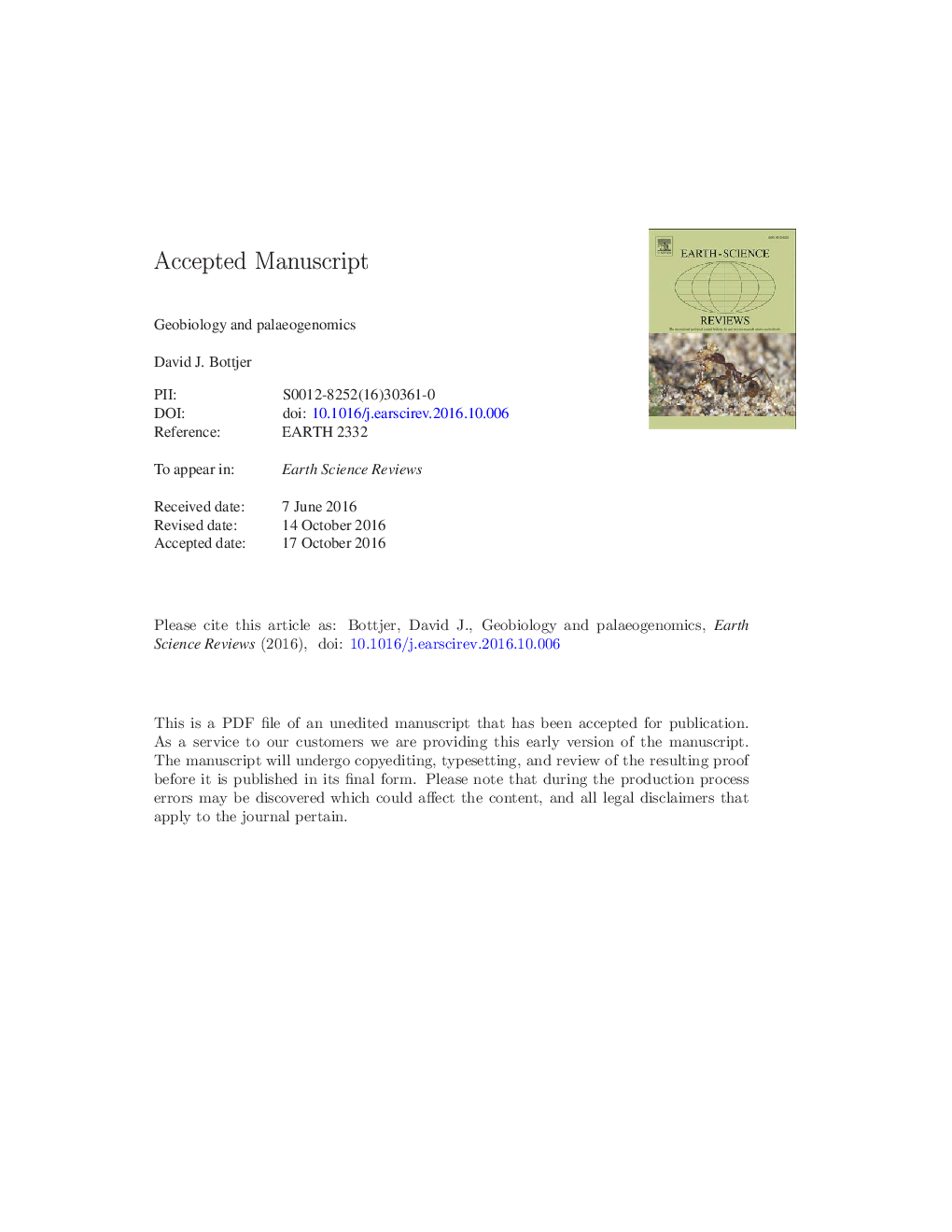| Article ID | Journal | Published Year | Pages | File Type |
|---|---|---|---|---|
| 5785187 | Earth-Science Reviews | 2017 | 54 Pages |
Abstract
Geobiology is centered on interactions of the biosphere with the atmosphere, hydrosphere, and lithosphere. In deep time geobiology has focused on critical intervals of change for Earth and its biota. Such geobiological studies include data from palaeobiology, geochemistry and sedimentary geology within an interdisciplinary framework. Palaeogenomics has a variety of research agendas, and one of them is to understand the genes involved in key changes in the evolutionary history of life and when those genes and their interactions first evolved. The combination of geobiology and palaeogenomic studies is a powerful approach which leads to a more fundamental understanding of how Earth and life have changed through time. For example, linking palaeogenomic studies of biomineralization genes in modern organisms and when they first evolved in the Cambrian with geobiological studies of the impact this had on the production of carbonate sedimentary facies such as encrinites and the development of the Neritan ocean provides a unique perspective on how genes have shaped formation of the sedimentary record. Another component of the Cambrian explosion, the evolution of vertical bioturbation at the start of the Cambrian, has had significant effects on biogeochemical cycling and sediment production, and provides an inviting target for future genomic studies. The remaining Phanerozoic includes a broad variety of evolutionary innovations which within a joint geobiological and palaeogenomic context can also be profitably studied. In pelagic environments the genomic changes leading to evolution of the calcium carbonate biomineralized skeletons of coccolithophores contributed to the widespread deposition of carbonate sediment in deep settings and development in the Mesozoic of the Cretan ocean. On land, linking palaeogenomic studies of the genes that led to the Palaeozoic evolution of lignin and their associated geobiological effects, such as deposition of coal, provide another example of the effects of genes upon development of the sedimentary record. Such work will ultimately provide a history of genomic change and the environmental factors that influenced it, as well as how genomic change influenced environments.
Related Topics
Physical Sciences and Engineering
Earth and Planetary Sciences
Geology
Authors
David J. Bottjer,
